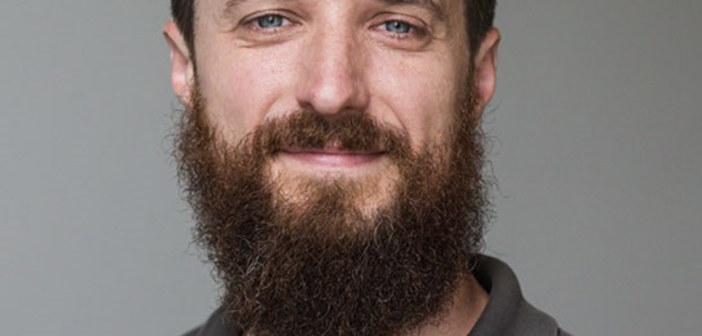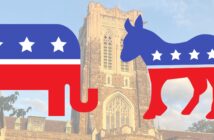Q&A: Thomas McAndrew Ph.D, M.S., new assistant professor at Lehigh’s College of Health
Thomas McAndrew joined Lehigh’s College of Health in July 2020 as an assistant professor teaching Population Health Data Science I-III. According to the College of Health’s website, McAndrew is a computational scientist and studies ensemble models, expert-prediction, crowdsourcing for forecasting infectious diseases. McAndrew is also part of a team of biostatisticians advising the CDC in forecasting for COVID-19. Before Lehigh, McAndrew worked as a postdoctoral fellow of biostatistics at University of Massachusetts Amherst and in industry analyzing multinational clinical trials for cardiovascular research.
In an interview with The Brown and White, McAndrew discussed his transition to Lehigh, his current work with forecasting for COVID-19, as well as his plans for the future of the College of Health.
Q: Why are you excited to be part of the College of Health and what made you choose to come to Lehigh?
Thomas McAndrew: I’m excited to be a part of the College of Health specifically because it gives me the opportunity to build something new from the ground up. In some of the other institutions that I interviewed at, everything was already in line and you were just teaching, but I wanted the opportunity to build my own thing. As for why Lehigh, I think that a true professor teaches and engages in what they love to do and what they are passionate about. I’m passionate about teaching and I’m passionate about doing research. Lehigh emphasizes both of those things which is not true of every institution, and that’s why I picked Lehigh. I love doing both of these things and Lehigh loves that I love doing both of these things, so it just seemed like a natural fit.
Q: How has COVID impacted your transition to Lehigh?
TM: Something that the coronavirus did that was positive to my transition to Lehigh was that it prompted me to get online teaching up and ready a lot faster than I would normally have. I had planned on recording lectures, I had planned on doing other stuff, but I was thinking maybe in two to three years. With online teaching it made me do it now. I think a big negative thing that I didn’t expect to be so negative is that I don’t get to interact with the Lehigh community, which is really a bummer. I don’t get to see any of the professors, the faculty, or the staff. I don’t get to see any of the students besides on Zoom, which has been a real bummer.
Q: How has your past work with forecasting other diseases like the seasonal flu prepared you for the challenges of the new pandemic?
TM: The way the data is structured and the people I am supposed to talk to at the CDC and others in public health—how to talk to them, how to present information, how to gather and collect data—working with the seasonal flu before COVID has certainly prepared me for that. With that said, no one was prepared for how fast the data would change, how fast new information would be coming on board, these sort of lightning-fast turnarounds, and sort of programming like a machine, that part I wasn’t as prepared for.
Q: What projects are you currently working on?
TM: There’s a bunch but the big ones are called ensemble forecasting and consensus forecasting. At UMass Amherst, I worked on ensemble forecasting which was when you had an input data set of predictions from statistical models, and your job was to take those predictions and build one combined prediction that is more accurate and calibrated than any individual prediction. A consensus forecast is similar, except it takes as input predictions from people. The input or predictions are from humans and you try to combine them into one aggregate prediction. We ask for all sorts of predictions about COVID, like: how many incident cases will there be next week? How many incident deaths due to COVID-19 will occur next week? How many variants of concern will the CDC monitor in the future?
We also do one more thing which is metaforecast, that’s taking a consensus, an ensemble of people and a group of computational models, and you combine those two things together. The question is whether or not a metaforecast performs better than either of the two (ensemble or consensus forecasts.) Another project is what I call optimal action reporting. I ask experts in the modeling of infectious disease what actions we should take to reduce the spread of SARS-CoV-2 and the burden of COVID-19. I take those answers and we go through what is called a Delphi process which is multiple rounds of people discussing an idea to come to a behavioral consensus. Each month we compile a report of expert proposed actions and send that report to members of the CDC. The top five proposed interventions last month were: a national stay at-home-order with financial compensation for wages lost, greater access to a vaccine, a national mask mandate, better access and better frequency of testing, and the last one, a national coordinated response. That whatever mitigation strategy you take, it should be uniform across the US.
Q: What work do you hope to do in the future? Was there another disease or condition that you hoped to research more before the pandemic began?
TM: Future work for sure will be in this field of human judgemental forecasting—asking people questions and how to best combine their responses, as well as how to best ask questions, how to evaluate the importance of a question, and optimal methods for how people should input answers. I want to stay in this field of asking people questions and getting their answers, because I like it as a future direction for my research. There’s a couple of other directions. I spent a lot of industry time in cardiovascular clinical trials and I would like to spend more time in clinical trials in the future. I currently spend time doing what is called “data monitoring and safety,” which is when looking at patient data and assessing the risk to patients for continuing the trial. But in data safety monitoring there isn’t a lot of forecasting. You get a report that represents past data on patients. I think something I’d like to look into is if you can build a forecast of event rates for a trial so that you’re not just looking at past data, but also making some sort of reasonable assumption about what might happen in the future. I’d also like to work with other infectious disease agents. The plan when I got here was to build a Lehigh syndromic surveillance system where you monitor several different infectious disease agents and forecast all of them, and I still want to do that. We would start first with the flu and COVID-19 and then branch into other infectious disease agents slowly, especially the Aedes mosquito.






Comment policy
Comments posted to The Brown and White website are reviewed by a moderator before being approved. Incendiary speech or harassing language, including comments targeted at individuals, may be deemed unacceptable and not published. Spam and other soliciting will also be declined.
The Brown and White also reserves the right to not publish entirely anonymous comments.